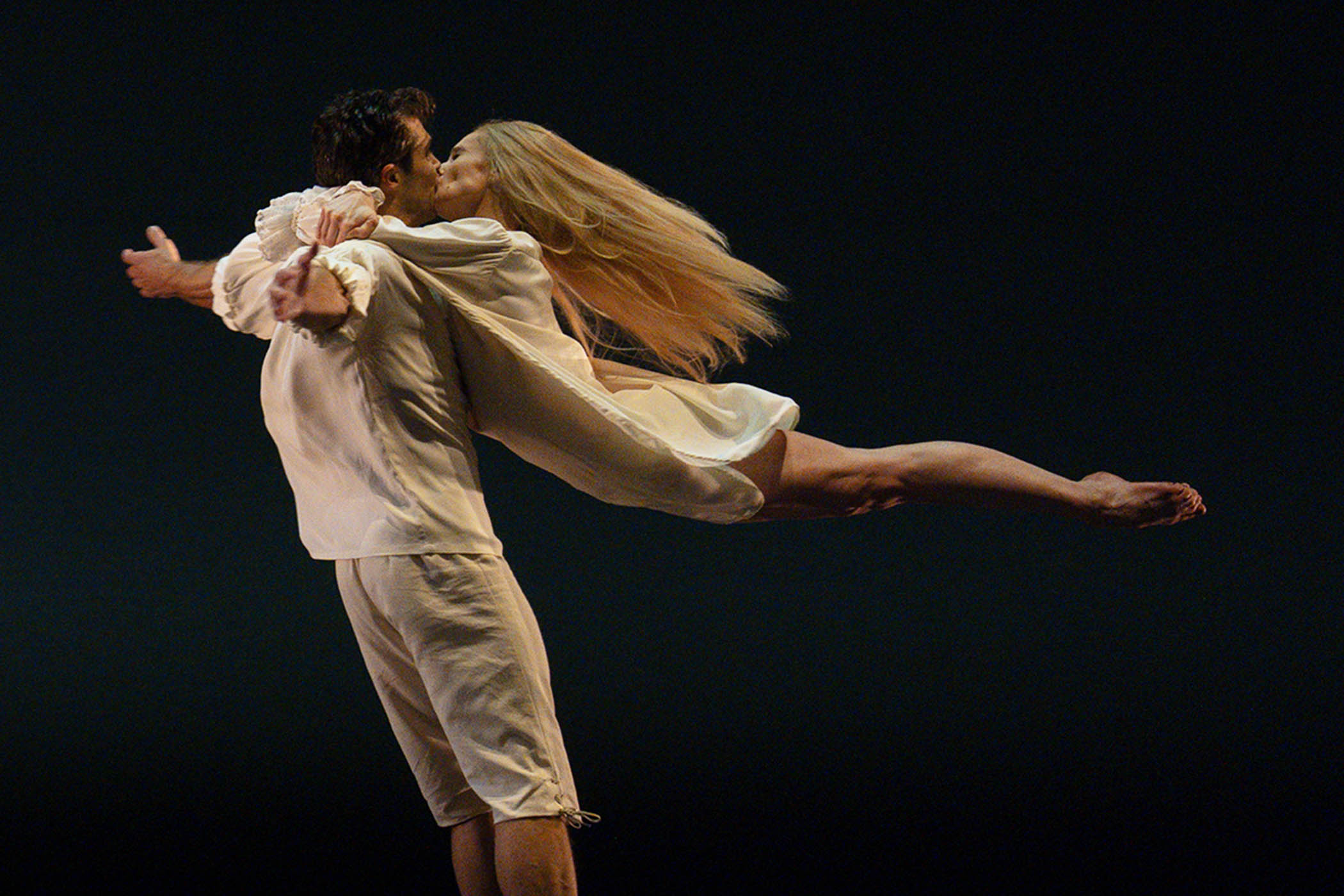Roberto Bolle is a phenomenon with a wardrobe shortfall. The joyful evening of dance the Italian superstar brought to Sadler’s Wells was noticeable for the way his sculpted chest took star billing.
Now 50, he is still an exceptional dramatic dancer, as his performances in the Royal Ballet’s Onegin showed. In this programme, he performs in six out of 10 items. He wears a shirt in only one: the sumptuous pas de deux from Angelin Preljocaj’s Le Parc, which concludes the night, with Bolle holding a flying Melissa Hamilton around his neck, lips locked as they spin with her legs suspended, in one of the longest kisses in ballet.
The couple also appear in Mauro Bigonzetti’s pensive Caravaggio, which opens the night. Bolle (bare chest, white leggings), a terrific, considerate partner, here manipulates Hamilton through a series of elegant, rapturous shapes. Its meaning isn’t absolutely clear, but the glorious quality of the performance is.

Roberto Bolle at Sadler’s Wells. Main image: he performs ‘one of the longest kisses in ballet’ with Melissa Hamilton
Then there’s Patrick De Bana’s In Your Black Eyes, a tortured solo inspired by its Ezio Bosso score, which pushes Bolle (bare chest, black trousers) through an increasingly intense sequence of repetitive steps. Les Indomptés by Benjamin Lamarche sets him (bare chest, jeans) alongside an identically clad Toon Lobach in an intriguing pattern of love and support. Opus 100 – für Maurice by John Neumeier, a study of friendship set to Simon & Garfunkel songs, is full of tender gestures and sweeping lifts for Bolle (bare chest, coat) and Oleksandr Ryabko.
Best of all is Russell Maliphant’s Two, with its haunting electronic score by Andy Cowton, which pinions Bolle (bare chest, black leggings) inside a box of light fashioned by Michael Hulls to flicker and gleam as he extends his limbs. It’s an extraordinary piece that allows each of its performers (Dana Fouras, Sylvie Guillem and Carlos Acosta among them) to fashion it in their own image. Bolle seems like a Roman god, his movements considered, forceful and graceful. It suits him perfectly and suggests just how much he can give if he finds the right choreography.
The evening is expanded by more traditional classical excerpts from Bolle’s friends from the ballet world, the Royal Ballet’s Vadim Muntagirov and Fumi Kaneko in a gleaming Grand Pas Classique shining among them. It’s a generous and ridiculously enjoyable evening. With a very light laundry bill.

‘Osipova and Patricio Revé find compelling symmetrical synchronicity’: at Royal Opera House
The Royal Ballet principal Natalia Osipova, now 39, is also producing self-curated programmes as she negotiates her transition from virtuoso megastar to different, more contemplative pieces. Her outing at the Linbury theatre was characteristically idiosyncratic and adventurous, opening with the striking Middle Duet II by Alexei Ratmansky, who nurtured Osipova when they were both at the Bolshoi. This piece, set to music by Philip Feeney, is a sharp, spiky, neo-classical duet, with an undertow of expressionism in the form of a white and a dark angel, who lurk over the action. Osipova and Patricio Revé find compelling symmetrical synchronicity in steps that are fierce and uncompromising.
The mood and style of The Exhibition by Jo Strømgren couldn’t be more different. Here Osipova is in flirty, soft-edged, comic mode as she meets Christopher Akrill in front of a seascape. In the surprising, surreal encounter that unfolds, they dance and speak (she in Russian) with great fluency as they explore the liberation that comes when two people don’t understand one another but spark each other’s interest.
In between, there’s a film of Osipova performing Frederick Ashton’s Five Brahms Waltzes in the Manner of Isadora Duncan and Akram Khan’s duet Mud of Sorrow, in which she clings to Revé with her legs locked around his waist as their arms make shapes. It’s adapted from a work that Khan created with Sylvie Guillem – another dancer who built a late career by being brave. Osipova looks set to follow in her footsteps.
Photographs by 2025 RBO/Andrej Uspenski

